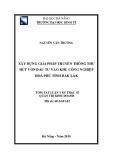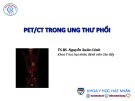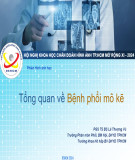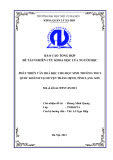
REVIEW Open Access
Antiphospholipid syndrome; its implication in
cardiovascular diseases: a review
Ioanna Koniari
1*
, Stavros N Siminelakis
2
, Nikolaos G Baikoussis
1
, Georgios Papadopoulos
3
, John Goudevenos
4
,
Efstratios Apostolakis
1
Abstract
Antiphospholipid syndrome (APLS) is a rare syndrome mainly characterized by several hyper-coagulable
complications and therefore, implicated in the operated cardiac surgery patient. APLS comprises clinical features
such as arterial or venous thromboses, valve disease, coronary artery disease, intracardiac thrombus formation, pul-
monary hypertension and dilated cardiomyopathy. The most commonly affected valve is the mitral, followed by
the aortic and tricuspid valve. For APLS diagnosis essential is the detection of so-called antiphospholipid antibodies
(aPL) as anticardiolipin antibodies (aCL) or lupus anticoagulant (LA). Minor alterations in the anticoagulation, infec-
tion, and surgical stress may trigger widespread thrombosis. The incidence of thrombosis is highest during the fol-
lowing perioperative periods: preoperatively during the withdrawal of warfarin, postoperatively during the period of
hypercoagulability despite warfarin or heparin therapy, or postoperatively before adequate anticoagulation achieve-
ment. Cardiac valvular pathology includes irregular thickening of the valve leaflets due to deposition of immune
complexes that may lead to vegetations and valve dysfunction; a significant risk factor for stroke. Patients with
APLS are at increased risk for thrombosis and adequate anticoagulation is of vital importance during cardiopul-
monary bypass (CPB). A successful outcome requires multidisciplinary management in order to prevent thrombotic
or bleeding complications and to manage perioperative anticoagulation. More work and reporting on anticoagula-
tion management and adjuvant therapy in patients with APLS during extracorporeal circulation are necessary.
Introduction
Antiphospholipid syndrome (APLS) [1,2] comprises clini-
cal features such as arterial or venous thromboses and the
detection of so-called antiphospholipid antibodies (aPL) as
anticardiolipin antibodies (aCL) or lupus anticoagulant
(LA). APLS may be the most common acquired hypercoa-
gulable state, occurring in up to 2% of the general popula-
tion [3,4]. However, not all patients with these antibodies
will develop the antiphospholipid syndrome, as antipho-
spholpid antibodies have been found in about 5% of the
healthy population [5]. Patients with APLS have a signifi-
cant involvement of the cardiovascular system. Coronary
artery disease and valvular abnormalities constitute the
most frequent manifestations representing more than two-
thirds of cases [5]. Several studies have demonstrated that
hypercoagulability of APLS patients predisposes to high
rates of thromboembolic events as well as high rate of
restenosis of the coronaries and the grafts after percuta-
neous interventions or CABG respectively, causing signifi-
cant morbidity and mortality [6,7]. Especially, APLS
patients can develop vasculo-occlusive complications
before operation with the reversal of preoperative anti-
coagulation, intraoperatively due to inadequate anticoagu-
lation during bypass and postoperatively before the
achievement of adequate anticoagulation [8]. Therefore,
the management of APLS patient can be quite challenging
both for cardiologist and cardiac surgeon.
Etiology-Pathophysiology
Anticardiolipin (aCL) antibodies are a heterogeneous
family of auto-antibodies directed against protein-
phospholipid complexes [6]. It is now generally
accepted that there is a group of patients in whom
high titers of aCL antibodies, usually the IgG class, and
thrombotic features occur without clinical manifesta-
tions of systemic lupus erythematosus (SLE): primary
APLS [2,6]. Anticardiolipin antibodies can be also
observed in patients with SLE, or other autoimmune
* Correspondence: iokoniari@yahoo.gr
1
Cardiothoracic Surgery Department. University of Patras, School of Medicine.
Patras Greece
Full list of author information is available at the end of the article
Koniari et al.Journal of Cardiothoracic Surgery 2010, 5:101
http://www.cardiothoracicsurgery.org/content/5/1/101
© 2010 Koniari et al; licensee BioMed Central Ltd. This is an Open Access article distributed under the terms of the Creative Commons
Attribution License (http://creativecommons.org/licenses/by/2.0), which permits unrestricted use, distribution, and reproduction in
any medium, provided the original work is properly cited.






























